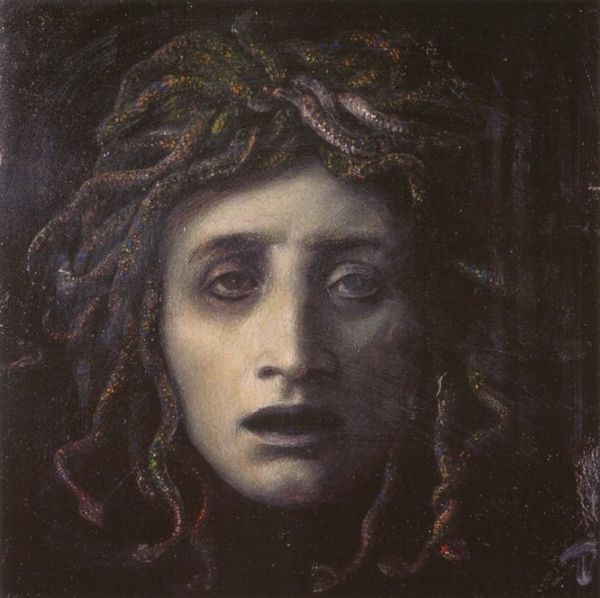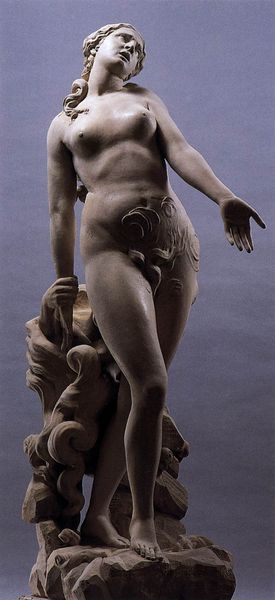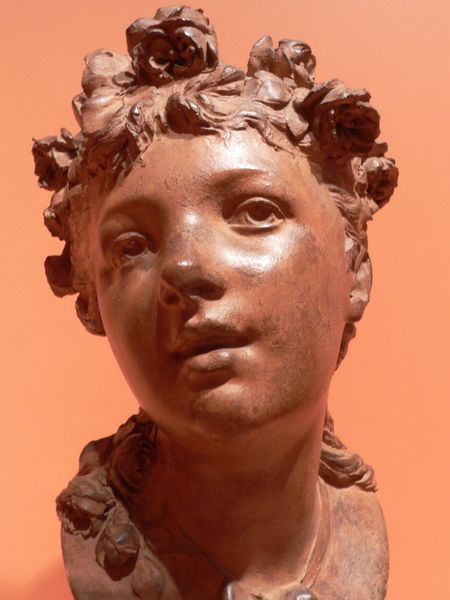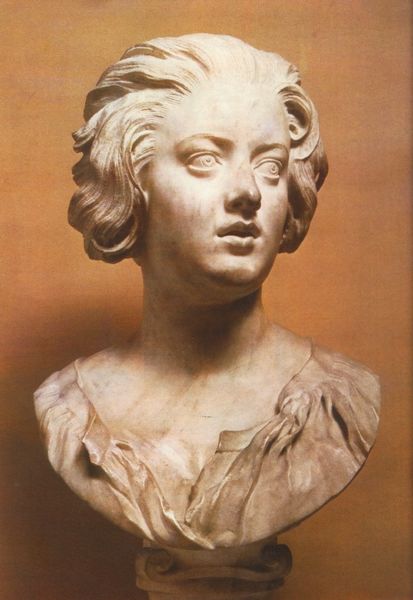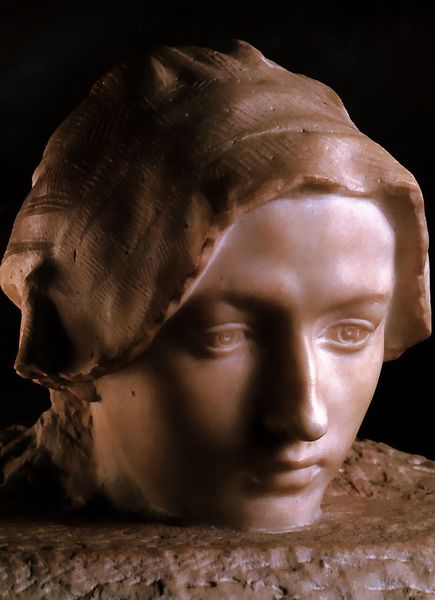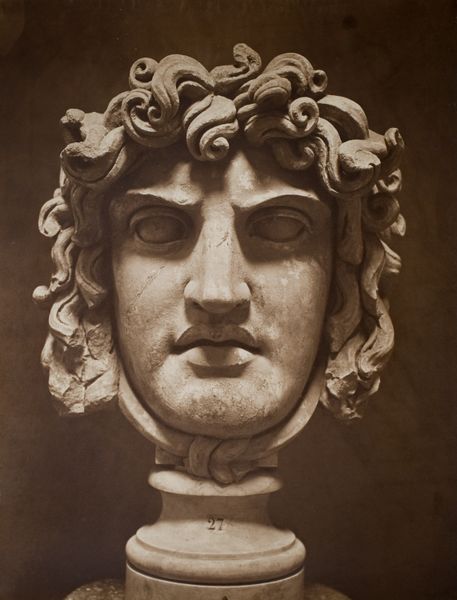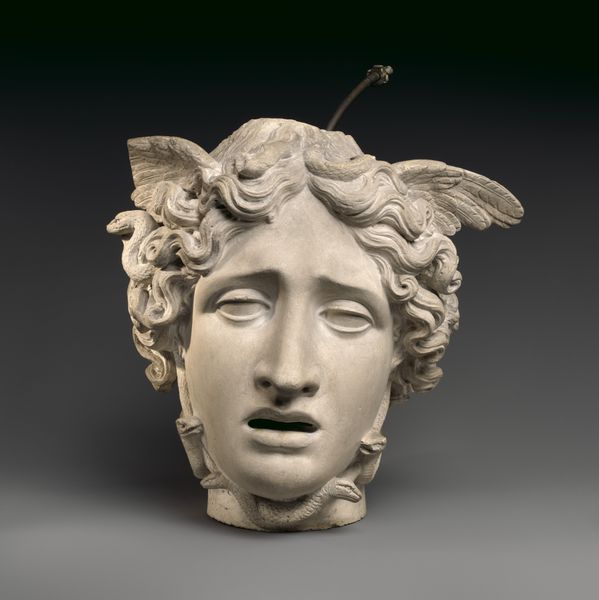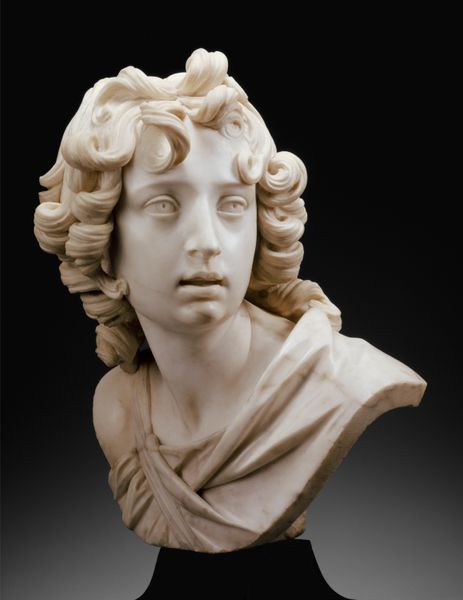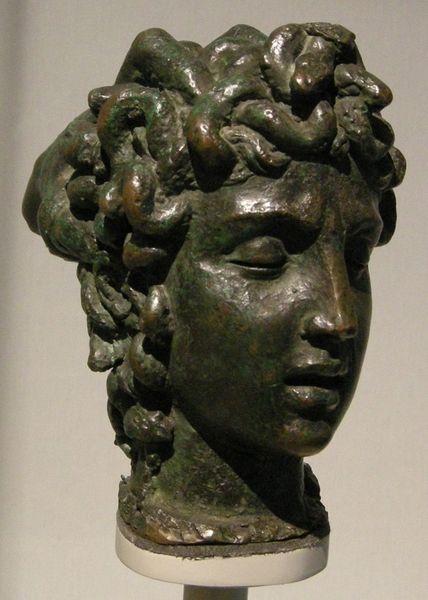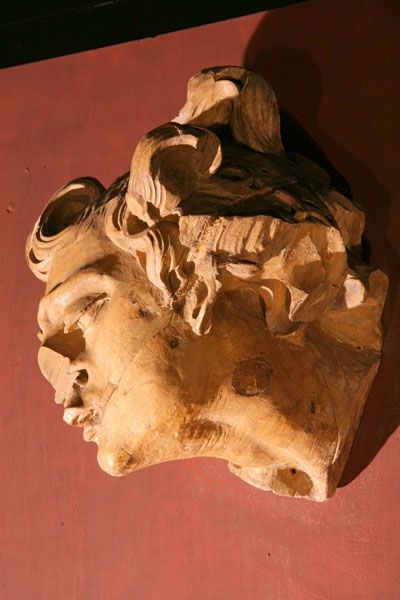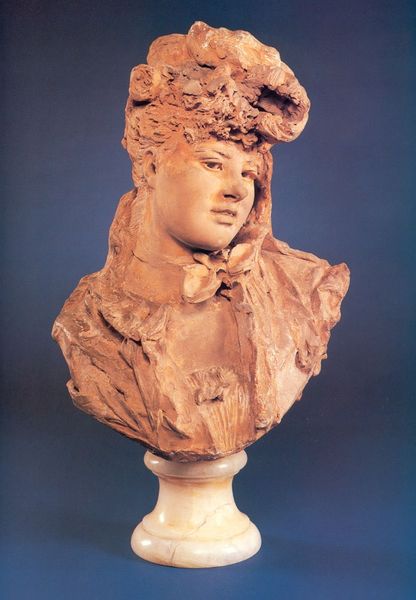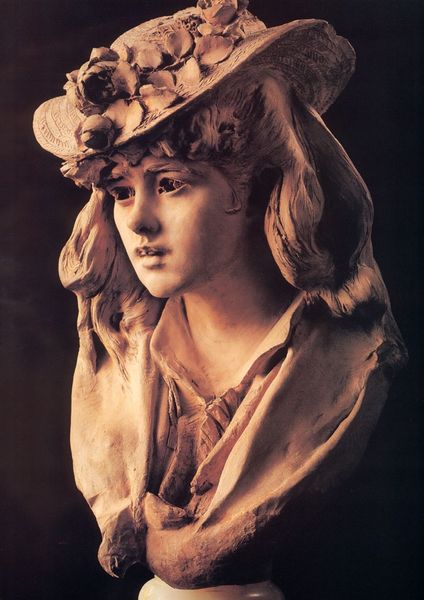
carving, sculpture, marble
#
portrait
#
carving
#
baroque
#
sculpture
#
figuration
#
roman-mythology
#
sculpture
#
mythology
#
human
#
marble
Copyright: Public domain
Editor: We’re looking at Gian Lorenzo Bernini's marble sculpture, *Medusa*. The date is unknown, but it's housed in the Palazzo dei Conservatori in Rome. The texture is smooth, and although I know her story, her expression appears oddly serene to me. What do you see in this piece from a formalist perspective? Curator: Note the carefully arranged dynamism. The snaking forms of the hair create a swirling vortex around Medusa's face, yet the face itself is surprisingly still. This tension between movement and stillness is key. Editor: It is quite the contrast. I noticed that too! Can you elaborate on the function of that opposition? Curator: The opposition amplifies the emotional complexity. Observe how the meticulously crafted marble mimics the organic sinuosity of living snakes, creating a palpable sense of unease. The question becomes how these intrinsic forms signify meaning? Editor: You're right, the texture of the snakes really plays against the smooth face. Curator: Indeed. Bernini's mastery lies in his ability to exploit the inherent qualities of marble. He coaxes it into replicating living flesh while simultaneously reminding us of its cold, unyielding nature. It creates this duality, like an ephemeral sculpture. This dichotomy encourages the viewer to decode a reading based on visual elements alone, almost irrespective of Medusa’s narrative. It’s the form itself speaking, if you will. Editor: So, without any understanding of Greek mythology, we can still appreciate the form? Curator: Precisely. While knowledge of the myth might enrich the experience, a purely formalist reading hinges on the visual structure. It considers composition, line, texture, and the interplay of these elements to communicate. Do you find the distinction interesting? Editor: Yes! Focusing on form opens up the work to a range of interpretations. I had focused on her story initially. Curator: Excellent, we can observe art from varied perspectives.
Comments
No comments
Be the first to comment and join the conversation on the ultimate creative platform.
